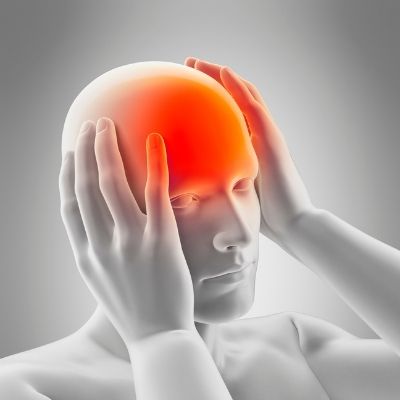Headaches and the Body
 There are many different types of headaches. Although not all headaches are the same, they all share at least one thing in common – they cause pain. Both men and women suffer from headaches. 70 million people deal with headaches every day in which 90% are men and 95% are women. There are over 150 different types of headaches. Headaches are categorized in two ways, primary and secondary.
There are many different types of headaches. Although not all headaches are the same, they all share at least one thing in common – they cause pain. Both men and women suffer from headaches. 70 million people deal with headaches every day in which 90% are men and 95% are women. There are over 150 different types of headaches. Headaches are categorized in two ways, primary and secondary.
Primary headaches are the most common. It is a headache that has no other cause.
Secondary headaches is the symptom of another problem.
Causes of headaches;
Headaches can be caused by multiple reasons. Intense dehydration, muscle tension, stress, infections, brain injuries, tumors, strokes, as well as other issues.
Most common types of headaches;
Migraine-
A migraine is caused by abnormal brain activity, which can be triggered by a number of factors. However, the exact chain of events remains unclear. Some people who get migraines have warning symptoms, called an aura, before the actual headache begins. An aura is a group of symptoms, including vision disturbances, that are a warning sign that a bad headache is coming. Migraine tend to happen more in women then men, but the symptoms are the same Migraines can last up to 72 hours, and the effects are different in every one. A migraine is a common type of headache that may occur with symptoms such as nausea, vomiting, or sensitivity to light. In many people, a throbbing pain is felt only on one side of the head.
Tension Headaches-
Tension Headaches are the most common headaches, It feels like pressure on your head (front, back, top and sides). There is no single cause for tension headaches. This type of headache is not an inherited trait that runs in families. In some people, tension headaches are caused by tightened muscles in the back of the neck and scalp. This muscle tension may be caused by:
Inadequate rest
Poor posture
Emotional or mental stress, including depression
Anxiety
Fatigue
Hunger
Overexertion
Tension headaches are usually triggered by some type of environmental or internal stress. The most common sources of stress include family, social relationships, friends, work, and school.
Cluster Headaches-
Cluster headache is one of the most painful types of headache. Bouts of frequent attacks, known as cluster periods,may last from weeks to months, usually followed by remission periods when the headache attacks stop completely. During remission, no headaches occur for months and sometimes even years.A cluster headache strikes quickly, usually without warning. Typical signs and symptoms include:
Excruciating pain, generally located in or around the eye, but may radiate to other areas of the face, head, neck and shoulders
One-sided pain
Restlessness
Excessive tearing
Redness in the eye of the affected side
Stuffy or runny nasal passage in the nostril on the affected side of your face
Sweaty, pale skin (pallor) on the face
Swelling around the eye on the affected side of your face
Reduced pupil size
Drooping eyelid
The pain of a cluster headache is often described as sharp, penetrating or burning. People with this condition say that the pain feels like a hot poker being stuck in the eye or that the eye is being pushed out of its socket. People with cluster headache appear restless, preferring to pace or sit and rock back and forth to soothe the attack. In contrast to people with migraine, people with cluster headache usually avoid lying down during an attack because this position seems to increase the pain. Some migraine-like symptoms, including nausea, sensitivity to light and sound, and aura, may occur with a cluster headache, though usually on one side.
Massage Therapy and headaches-
Massage Therapy and Acupuncture are both extremely effective with headaches of all sort. Neck, Back, Shoulder, and hand massage have shown to be very effective. Massage therapy helps to relieve types of headaches by easing muscle tension, relieving muscle spasms, releasing shortened muscles and relaxing tension held in the muscles of the head, shoulders, and neck. When muscle tension eases, there is less pressure on the nerves and blood vessels that supply them. Oxygen-rich blood circulation improves, which also relieves pain. Massage therapy not only helps the muscles of the body to relax but also effectively reduces the anxiety and mental stress that can cause or exacerbate headaches. Regular, ongoing massage therapy can also help to prevent headaches by helping to reduce overall stress and the muscle tension that can trigger headache pain and by helping to maintain emotional balance.
